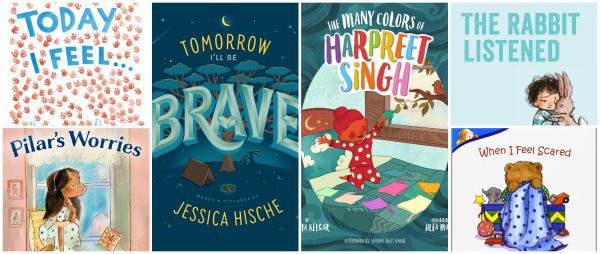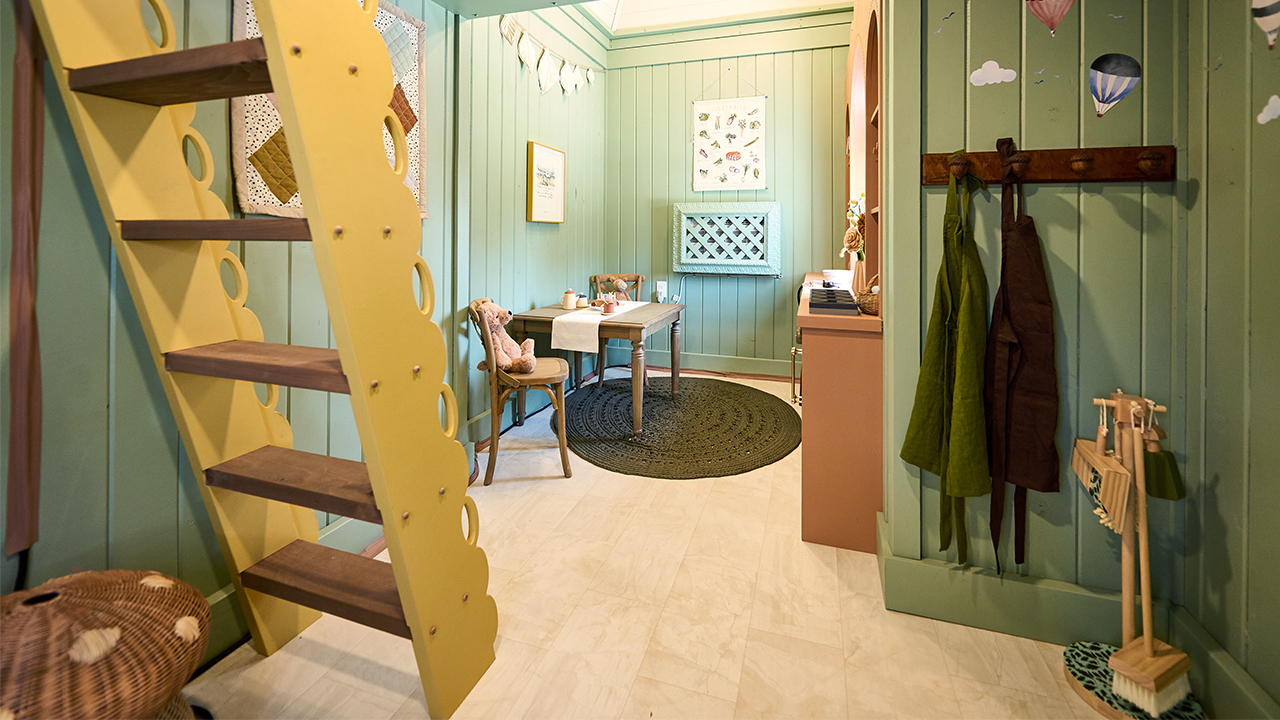We can support our children as they learn about their emotions and develop emotional intelligence. Picture books about feelings can help children identify their emotions, what each emotion feels like, and understand that all feelings are okay.
CASEL defines Social-Emotional Learning as acquiring “the knowledge, skills, and attitudes to develop healthy identities, manage emotions and achieve personal and collective goals, feel and show empathy for others, establish and maintain supportive relationships, and make responsible and caring decisions.”
They’ve identified five specific competencies for children which are the following:
-
- self-awareness
- self-management (self-regulation)
- social awareness
- relationship skills
- responsible decision-making
Essentially, social-emotional learning starts with self-awareness and the ability to name your own emotions when you’re feeling them.
It’s essential that we teach our kids to identify the emotions they are feeling beyond happy, sad, and mad (emotional granularity) so they can then improve emotional regulation as well as general well-being and mental health now and in the future. (It’s a journey not a destination.)
CAUTION: Recent research DISPROVES the theory of our facial expressions accurately express our feelings. THEY DON’T always. You can’t look at someone and necessarily label the emotion they are feeling correctly. Particularly someone from a culture different than your own. So be CAUTIOUS when you teach that happiness looks like a smiley face and anger looks like a scrunched-up face. It might be a starting point, but it is not backed by research.
One study I read also gave the example of an award-winning actor. They would never show emotions like an emoji face. And we often don’t either. Again, be careful with broad generalizations.
As children become better able to identify emotions, they’ll improve their relationship skills as well.
So how can you use the children’s books on this list?
Start with a book.
Discuss a lot.
Build a feelings vocabulary.
Pause to check in with yourself and your kids throughout the day.
Name and notice the emotions you’re feeling– and how they come and go.
Don’t label any emotions as good or bad. You could say some are strong emotions or uncomfortable but we need all our emotions. None are bad.
And, notice how you can have more than one emotion at a time!
Here you’ll find a list of the picture books that will spark further conversations and continue to build their emotional literacy foundation.
That being said, some books do not support the most current research and are problematic.
Some of the books might be are problematic because:
- they teach you can only feel one emotion at a time
- they teach that you can “overcome” anxiety (not true if you have an anxiety disorder, but is true if you have a situational worry)
- they send messages that emotions are good or bad
- some even suggest ignoring your inner voice to be “brave” — and doing things anyway (that book is NOT on this list)
The books that I recommend the most and are most in line with what I know to be best for kids from research and therapy are starred. Those books on this list are SO GOOD.
And, I’m starting to write SEL picture books because I want to see books on emotions that show both/and –and that show kids how to live with uncomfortable emotions, not just try to get rid of them which is a set up for shame.
Teachers, learn more about social-emotional learning in the classroom.
Best Picture Books for Kids About Emotions & Feelings
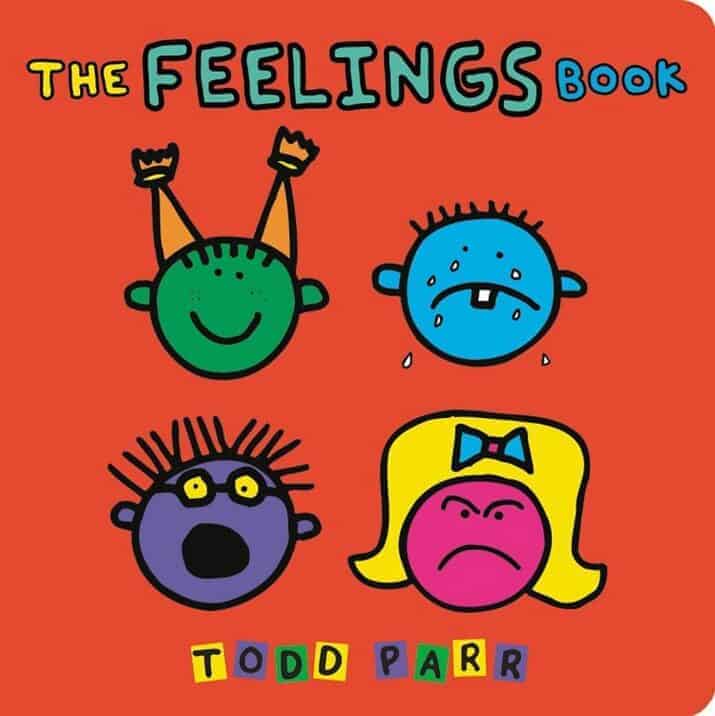
The Feelings Book by Todd Parr
“Sometimes I feel…” begins each page, continuing on to describe the many different feeling that kids can experience throughout their day from silly to lonely to scared. Kids will understand that it’s normal and okay for many feelings to come and go each day.
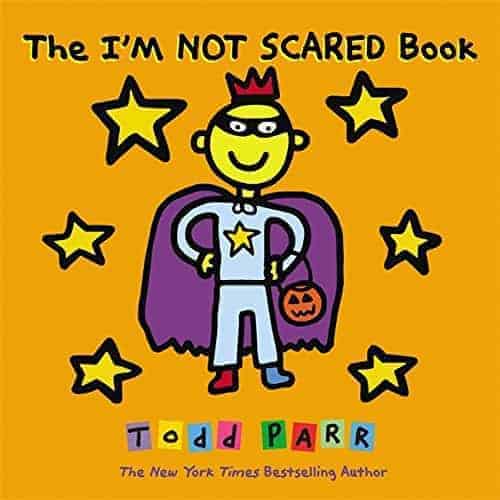
The I’m Not Scared Book by Todd Parr
This book talks about times when things are scary and times when those same things are not — “Sometimes I’m scared of dogs // I’m not scared when they give me kisses.” Parr shows how it’s okay to feel scared as well as shifting the perspective to see things in a new way.
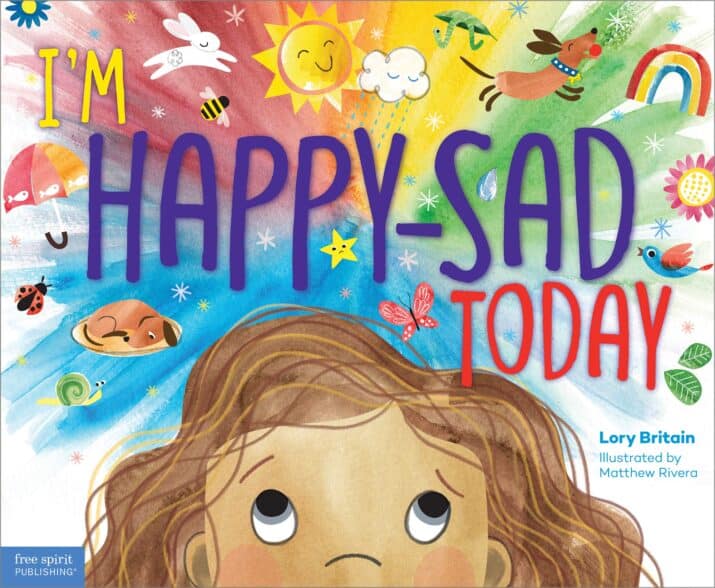
Happy Sad Today by Lory Britain, illustrated by Matthew Rivera ![]()
The truth is that we can feel more than one feeling at a time — which we call both/and. We can feel both happy and sad. In this story, the little girl experiences different feeling combinations throughout her day. Scared and brave walking into her new classroom. Sad and mad when her friends won’t play with her. And she can feel and express her feelings with movement and art.
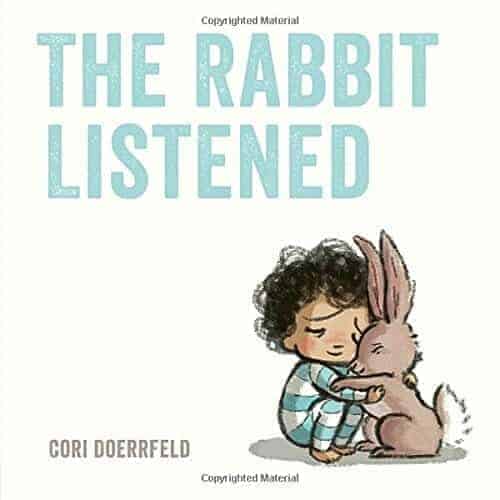
The Rabbit Listened by Cory Doerrfeld
Taylor is devastated when birds crash into his blocks. One by one, animals try to help with their advice– but this doesn’t help. Only Rabbit quietly sits near Taylor without any advice. Later, Taylor feels ready to talk, shout, remember, laugh, hide, throw, and ruin things. The rabbit also listens to Taylor when Taylor’s ready to build her block structure again. This is my new favorite picture book on feelings and emotions because it’s the perfect model of being present to someone’s emotional journey.
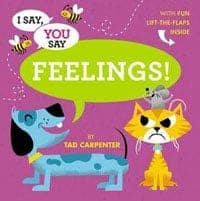
I Say, You Say FEELINGS by Tad Carpenter
A cute lift-the-page flap book about feelings. “I say happy, you say . . .” lift the page to see “SMILE.” “I say grumpy, you say . . . ” flip down the page to see “FROWN.”
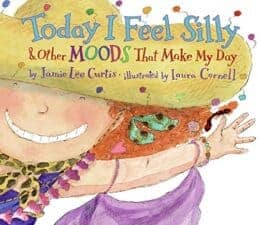
Today I Feel Silly: And Other Moods that Make My Day by Jamie Lee Curtis, illustrated by Laura Cornell
Playful illustrations and lyrical text capture the little girl’s feelings throughout the day…angry, silly, grumpy, and excited. This story expertly shows a relatable kid day filled with all sorts of emotions, or moods.
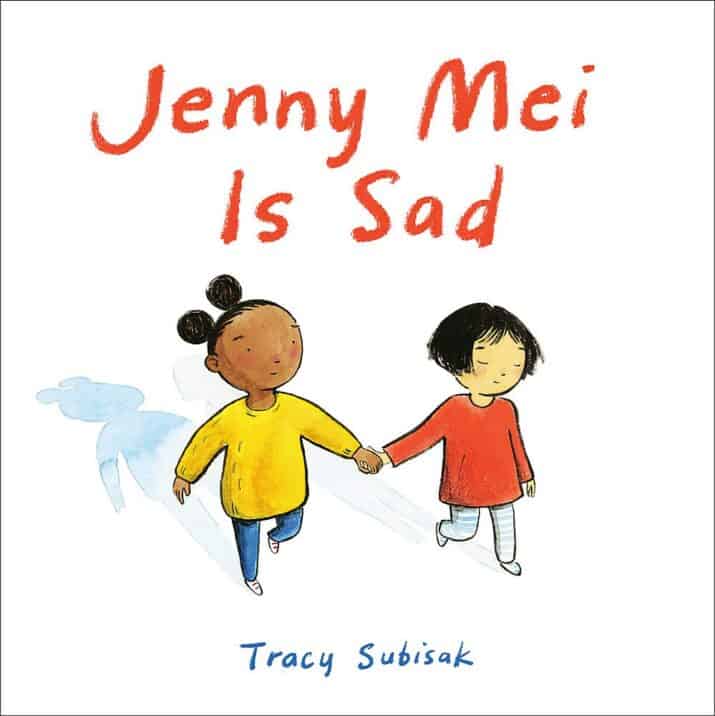
Jenny Mei Is Sad by Tracy Subisak ![]()
Narrated by Jenny Mei’s friend, we learn that Jenny Mei is sad but she doesn’t always show it. Sometimes she smiles and sometimes she rips things and sometimes she is quiet. And it’s ok. Her friend is always there for “fun and not-fun and everything in between.” This wonderfully shows the importance of accepting a friend’s feelings and behaviors without judgment or trying to fix things.
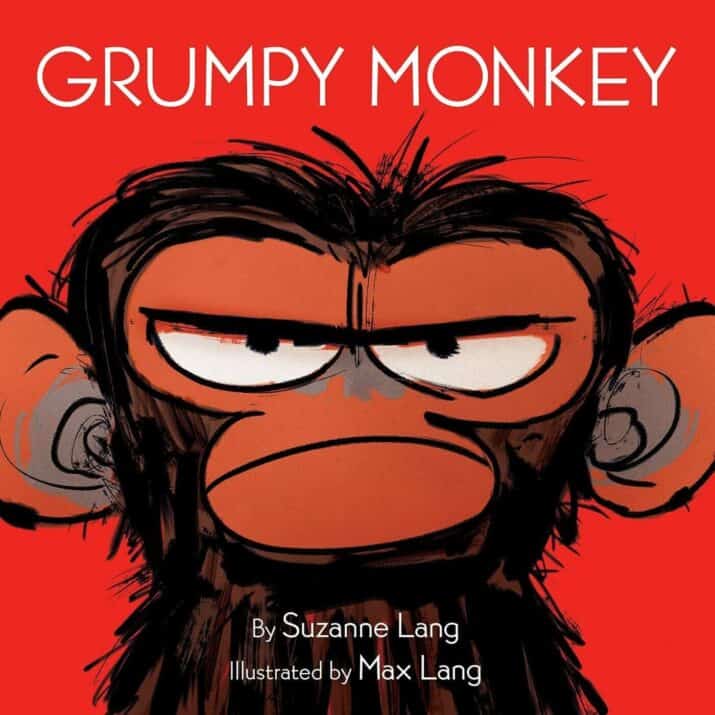
Grumpy Monkey by Suzanne Lang, illustrated by Max Lang ![]()
This is one of the best, most healthy emotional intelligence children’s books I’ve ever read about feeling your feelings — not stuffing nor trying to get rid of them, just feel them. Jim Panzee (chimpanzee, get it?) wakes up and nothing seems right. His jungle friends like Norman suggest that he might be grumpy. Yet Jim insists he’s NOT grumpy. As Jim stomps around, bunching his eyebrows, not swinging, he yells at the other animals that he is NOT grumpy. Later that day, Jim sits with Norman. “For now I need to be grumpy,” he explains finally. To which Norman responds, “It’s a wonderful day to be grumpy.”
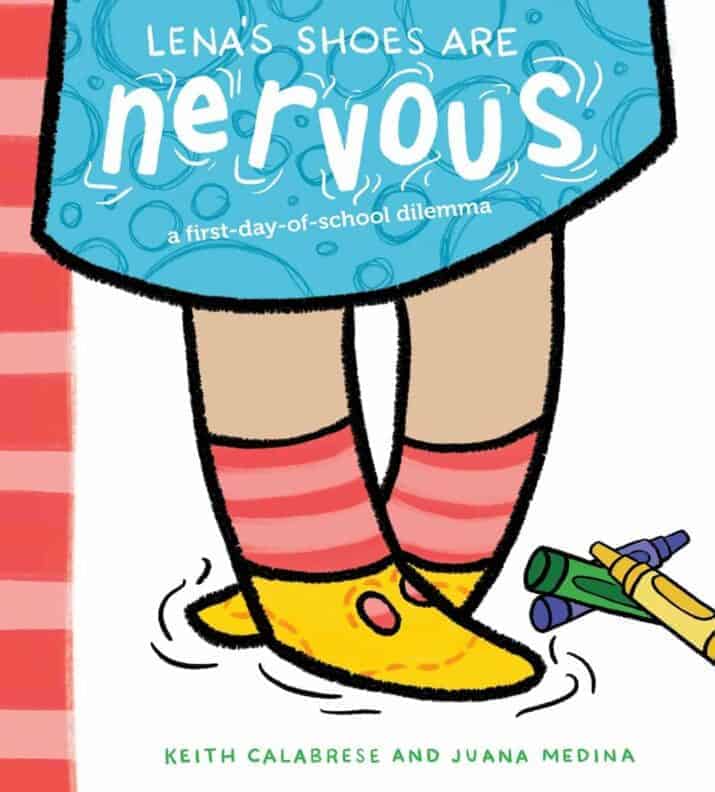
Lena’s Shoes Are Nervous (A First-Day-of-School Dilemma) by Keith Calabrese, illustrated by Juana Medina ![]()
Lena is feeling BOTH nervous and outgoing. Lena tells her dad about her shoes feeling nervous. Her dad asks questions — doesn’t try to solve. Then, Lena figures out that her headband can talk to her shoes. Her dad gives them some space for her to work things out… The headband reminds the shoes of other times they all were scared and also brave. And that things worked out. Even though her shoes still feel a little nervous, they decide to be brave and go to school. And Lena is proud of them!
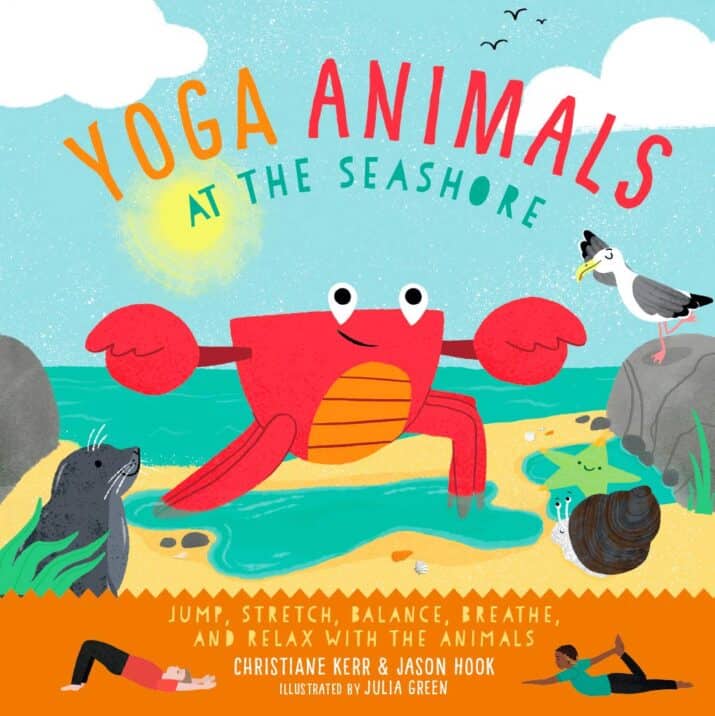
Yoga Animals at the Seashore by Christiane Kerr and Jason Hook, illustrated by Julia Green
This is a social-emotional and yoga story about a crab’s day. His fish friends support his many feelings–grumpy, alone, frustrated, etc.– by sharing yoga poses that can help. His initial emotions move into other emotions as he does the yoga poses. For example, he moves from tired to energized and from shy to brave. Each two-page spread tells the story plus shows the yoga pose with directions.
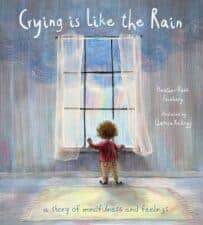
Crying is Like the Rain: A Story of Mindfulness and Feelings by Heather Hawk Feinberg, illustrated by Chamisa Kellogg ![]()
This book is spot-on for emotional intelligence — it encourages children to feel all the feelings and shares that crying is temporary just like the rain…It also explains that crying is healing just like the rain that nourishes the earth. “When it’s needed, the rain always comes. And after the rain pours down, the earth feels fresh and new.” “Tears help your mind, your heart, and your body feel new, clear, and calm after the storm. / We need our tears, just as the earth needs rain.” This is an essential mindfulness book for any social-emotional curriculum and a very helpful, accurate way for every child to understand sadness and tears.
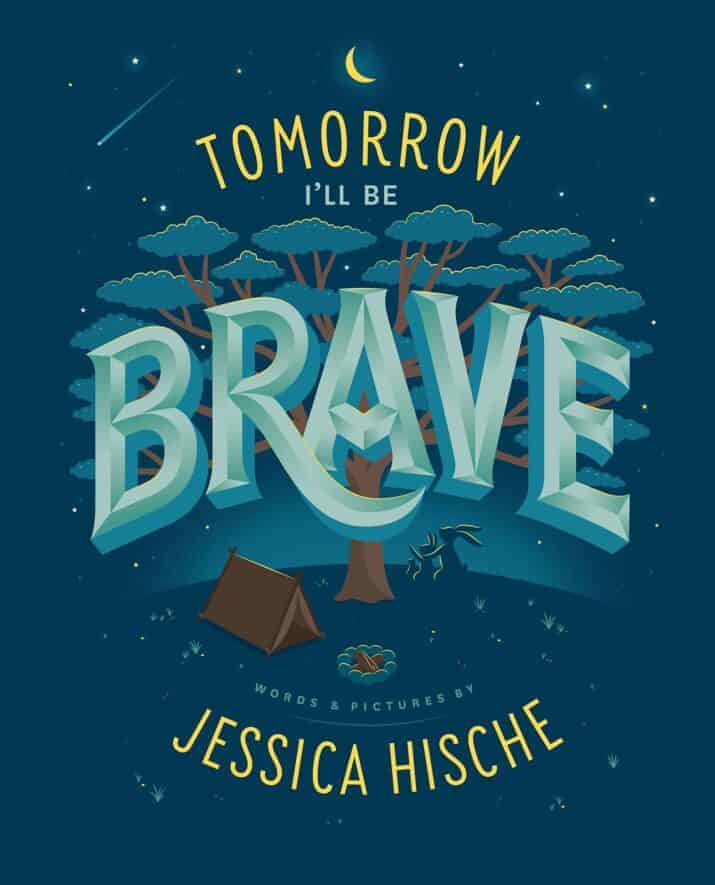
Tomorrow I’ll Be Brave by Jessica Hische
The book’s message is meant to encourage kids to pause at the end of their day and be reflective, love themselves, and set intentions for tomorrow. Each hand-lettered adjective is big, bright, and impactful from adventurous to curious. The writing talks about all the possibilities for tomorrow…tomorrow you can be creative, brave, and confident. Just like you tried to be today. And if you didn’t succeed, it’s okay. Hische gives examples of activities for each trait — for creative she writes, “I’ll color and draw for hours // I’ll play a game of make-believe and use my magic powers.” (Also read: Tomorrow I’ll Be Kind.)
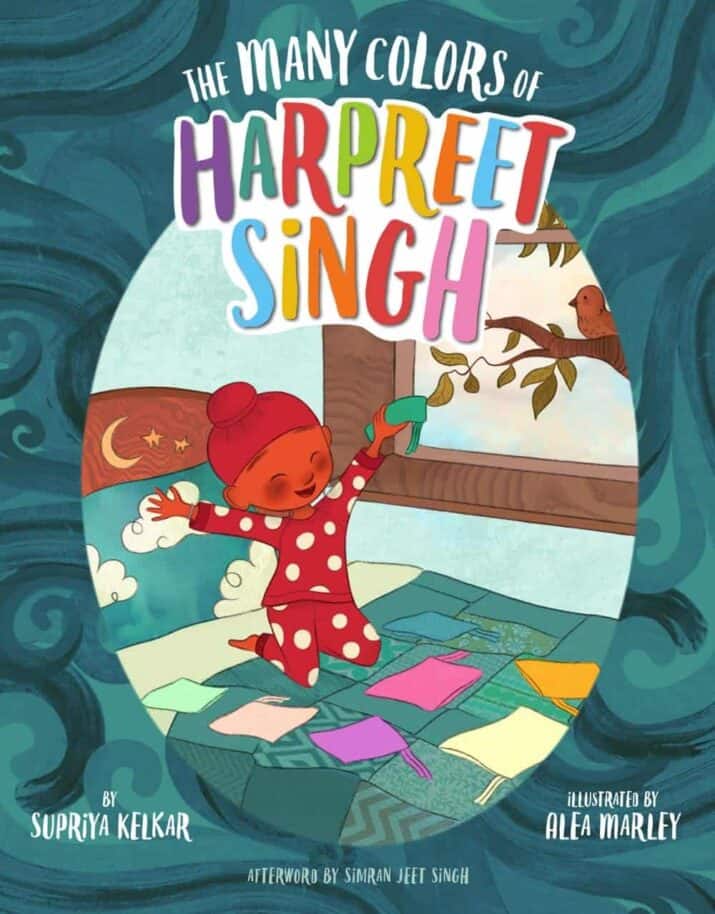
The Many Colors of Harpreet Singh by Supriya Kelkar, illustrated by Alea Marley
A relatable story about feelings, moving homes, and finding a friend with much-needed Sikh representation. Harpreet loves colors and expresses his feelings with the colors of his patkas (a kind of turban) that he wears each day. When his family moves to a new home, he wears blue for feeling nervous, then gray for feeling sad, and white for feeling shy. Harpreet picks white when he’s at his new sch0ol. Then one day, he finds a lost hat and when he returns it, he makes a new friend. A friend makes a big difference and Harpreet beings wearing colors again– red, pink, and yellow. In fact, now he wears different colors for different occasions, including white for hanging out with a new friend.
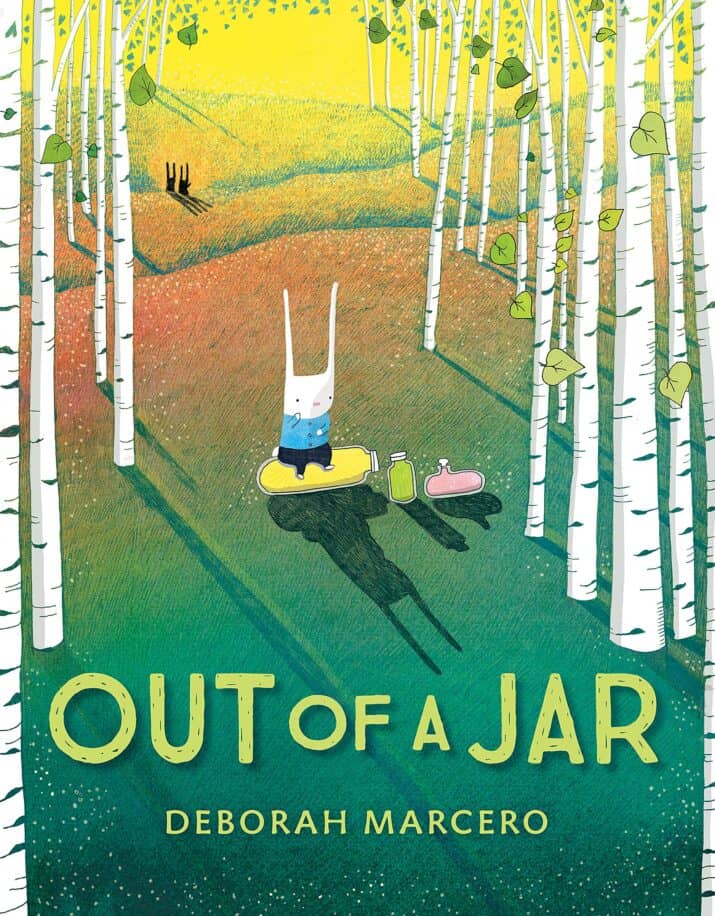
Out of a Jar by Deborah Marcero
Llewelyn puts his feelings in jars because he doesn’t like feeling them. And so, he stores them away so he doesn’t have to feel — even joy. But he adds one too many jars and they all explode out with colors and he discovered that he could feel more than one feeling at the same time–and he likes it — and then, lets the emotions go.
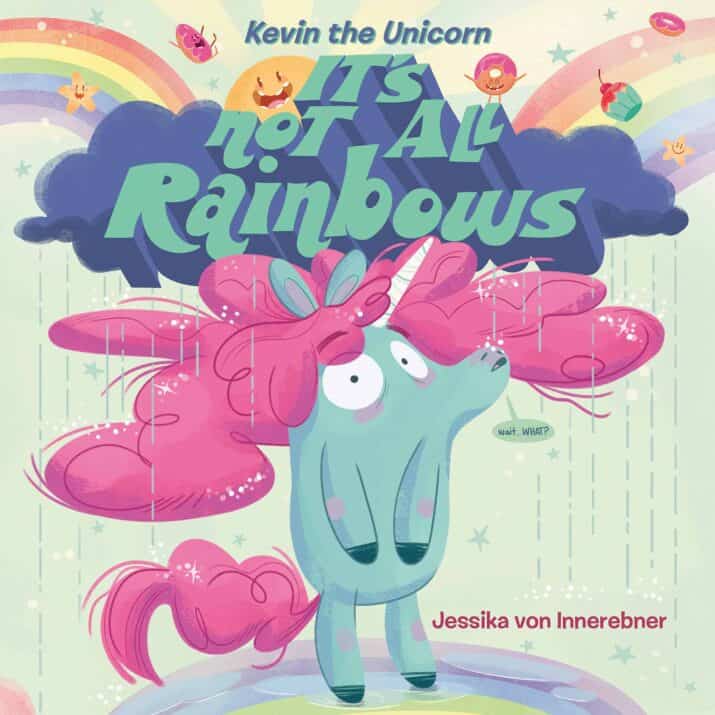
Kevin the Unicorn: It’s Not All Rainbows by Jessica von Innerebner
A delightful book about feeling your REAL feelings, even if they are not happy ones! Kevin is supposed to have days filled with magical awesomeness. Except he isn’t. He tries to pretend he’s having a glittery and fantastic day but his day is filled with not-so-great things and a lot of pretending that he is happy. Until he can’t contain his emotions anymore and shouts out the truth, “Today is not awesome or fantastic and it’s definitely NOT sparkly.” Interestingly enough, he’s not the only one feeling that way. Once Kevin stops pretending, other unicorns admit that they’re not having perfect days either. And that’s okay!
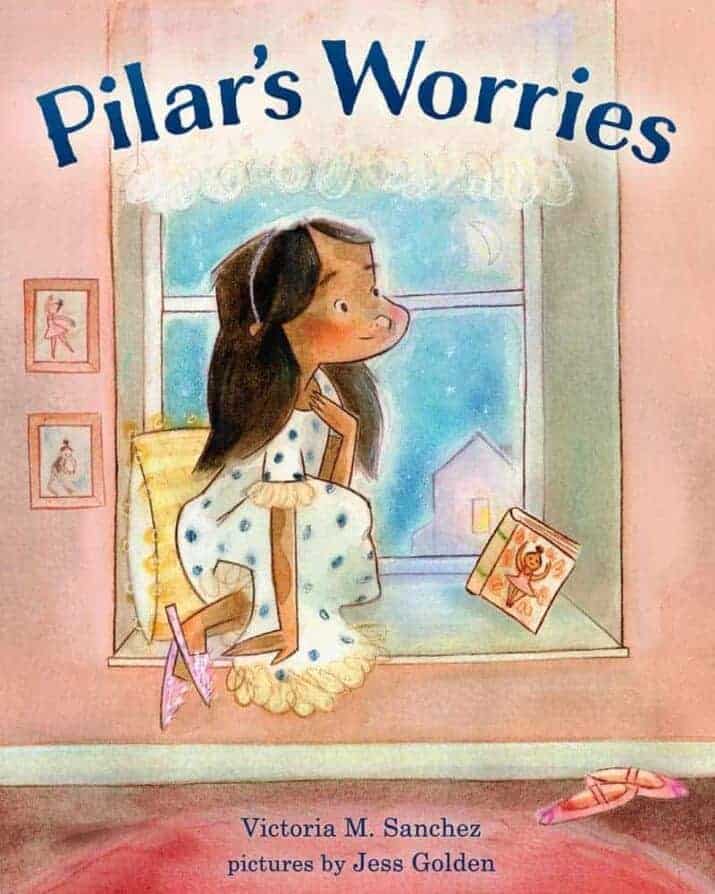
Pilar’s Worries by Victoria M. Sanchez, illustrated by Jess Golden
This story about a girl named Pilar shows a child experiencing anxiety — and what she does about it. She notices the sensations in her body like her heart beating fast and her legs prickling. She has strategies that help — breathing and saying, “I can do it“. It’s not overly complex but may show kids that they’re not alone.
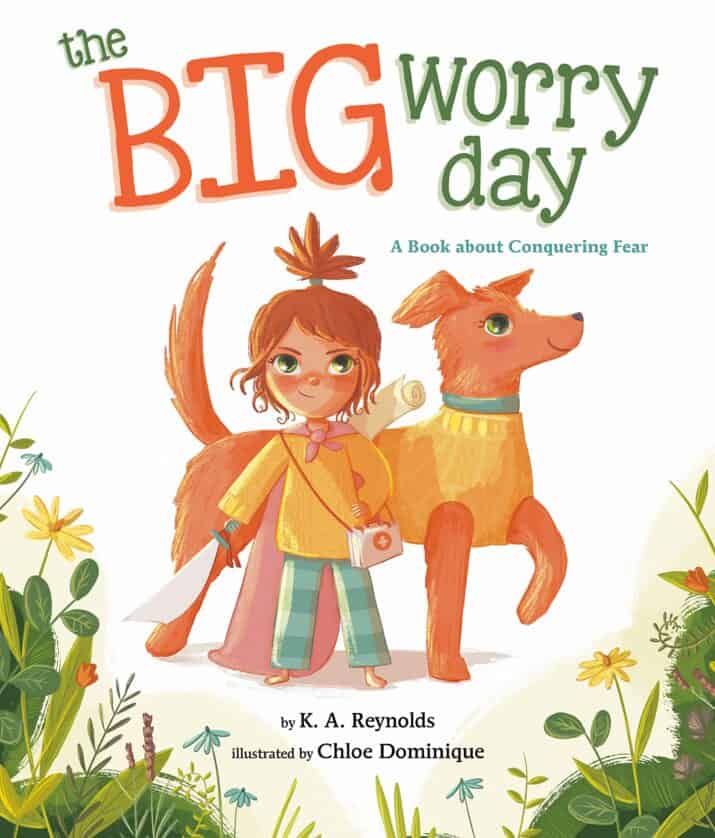
The Big Worry Day by K.A. Reynolds, illustrated by Chloe Dominique
The little girl’s dog has a lot of worries. To help the worries, the girl and dog try three strategies: breathe, use their imagination, and do yoga. Then, they can play outside without worries.
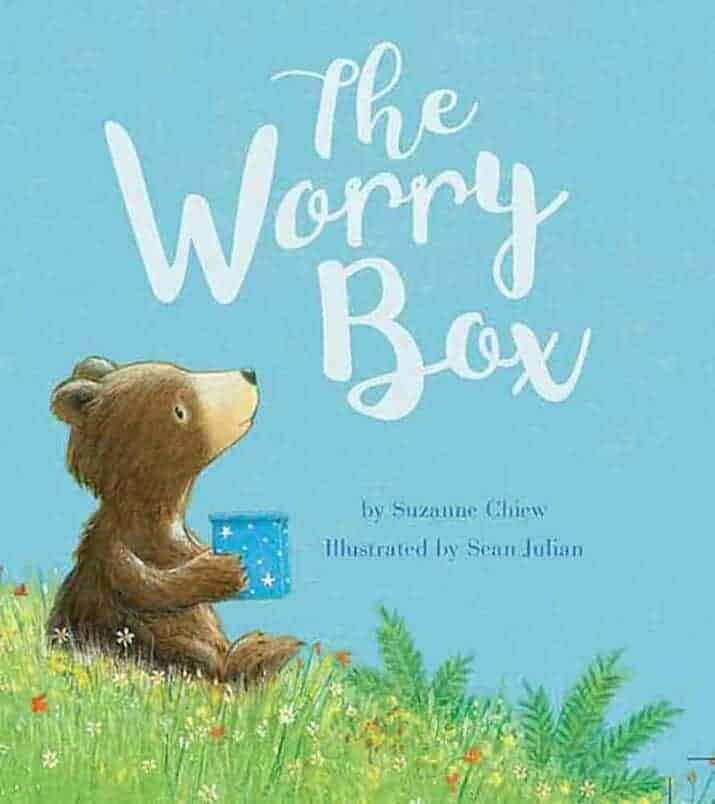
The Worry Box by Suzanne Chiew, illustrated by Sean Julian
When her friend, Murray Bear, worries about going to the waterfall, Molly shows him her worry box. She writes down what she’s worried about then puts it inside. “Worrying won’t stop me!” Because of this, Murray is able to enjoy the many adventures the day brings. Also, now he can help his new friend, Lily when she gets worried. “Sharing worries makes them feel smaller and not as scary.”
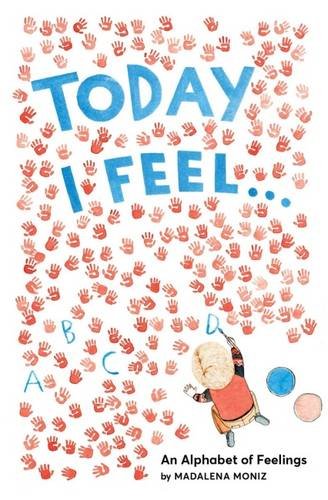
Today I Feel An Alphabet of Feelings by Madalena Moniz
Use this book to teach and practice identifying feelings. Each of the feelings is told by it’s corresponding illustration — and the illustrations are amazing! For example for Patient, a little boy sits on a gigantic puzzle with white spaces open, still needing the pieces. Think about all the rich discussion you could have as you read this story to your children.
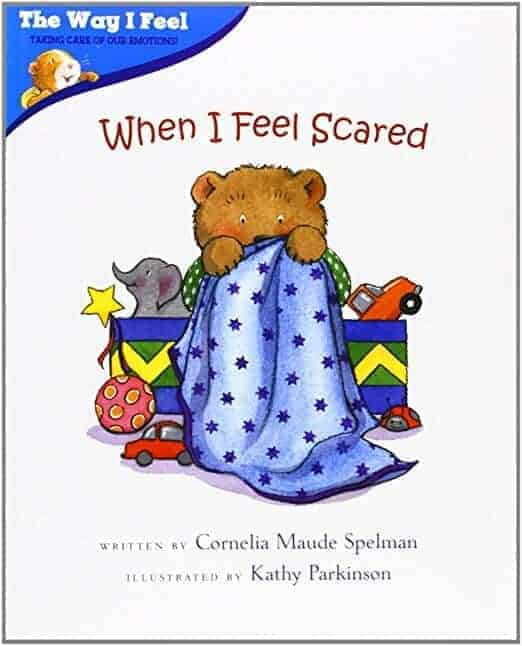
When I Feel Scared by Cornelia Maude Spelman ![]()
I can’t say enough good things about the When I Feel” books by Cornelia Maude Spelman. They’re well-written, accepting, and offer strategies for understanding the different emotions. The series includes:
When I Feel Jealous
When I Feel Good About Myself
When I Feel Angry
When I Feel Sad
When I Care About Others
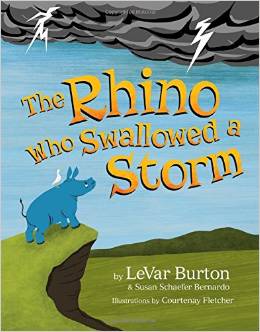
The Rhino Who Swallowed a Storm by LeVar Burton & Susan Schaefer Bernardo, illustrated by Courtenay Fletcher
I love the intention of this book — to help kids see that swallowing your feelings without expressing them just makes you feel yucky and that you can get help from your friends. I can see this book being really helpful to a lot of children and their families. Do you bottle your feelings or express them?
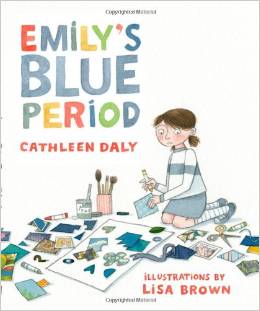
Emily’s Blue Period by Cathleen Daly, illustrations by Lisa Brown
Emily is struggling with the big feelings that come from a divorce. When she learns about Pablo Picasso’s blue period, Emily can relate because she’s also sad and going through her own blue period. It shows how emotions can be expressed in colors and with art.
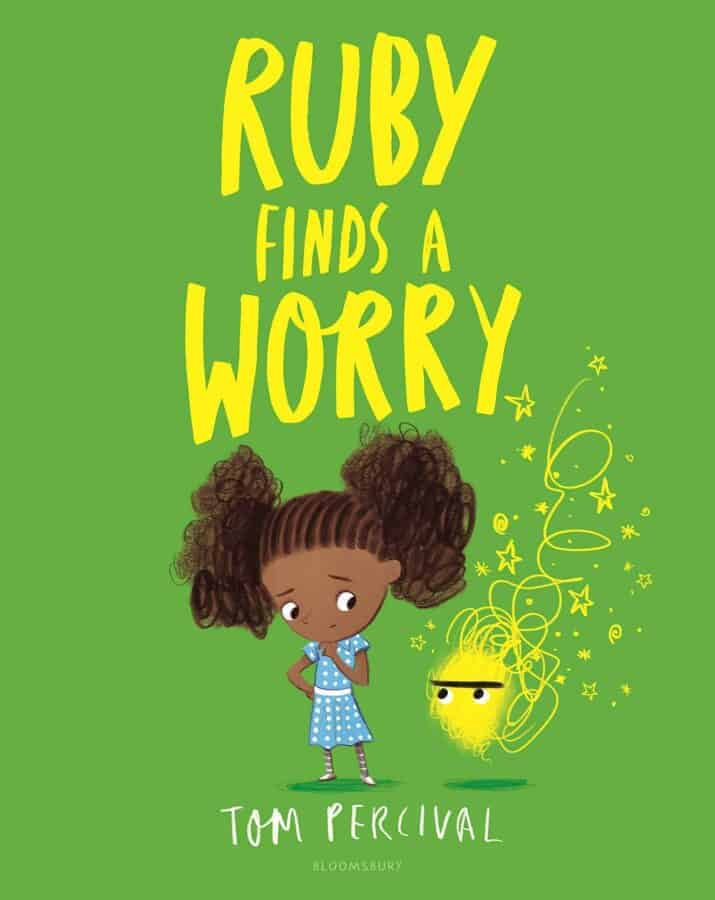
Ruby Finds a Worry by Tom Percival
Ruby discovers a yellow Worry blob that grows and grows and won’t leave her alone. The Worry stops Ruby from doing things she used to love, becoming enormous and all-consuming. When she sees a boy with his own blue Worry, Ruby realizes that other people have Worries, too and that when they talk about them, they become smaller, even going away. I actually REALLY DISLIKE this book’s message that shames Ruby (*she does the worst thing you can do and thinks about the worry,) and the erroneous message that if you talk about the worry, it will go away.
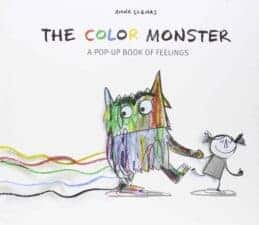
The Color Monster a Pop-Up Book of Feelings by Anna Llenas
Monster’s colors are all scribbly and mixed up, reflecting his emotions. A little girl helps Monster separate his feelings on each page with colors and fantastic pop-ups. I love the green calm page showing Monster in a hammock. The next-to-last page has fun pull-up tabs so kids can see inside each of the feelings jars. And the last page is the best surprise of all…
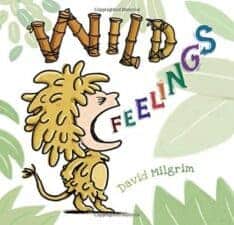
Wild Feelings by David Milgrim
Do you ever feel . . . ? asks this picture book. Do you feel as stubborn as a mule? as chicken as a chicken? as daffy as a duck? Simple illustrations and metaphorical text show that everyone feels these feelings — and that it’s okay.
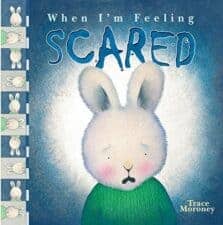
When I’m Feeling Scared by Trace Moroney
Bunny describes feeling scared. He describes what happens in his body (body trembles and shakes,) what he does (run and hide,) what he does (yell, “HELP,”) and that it’s okay to be scared that everyone gets scared sometimes. Basic and well-done. More board books in this series: When I’m Feeling Kind, When I’m Feeling Happy, and When I’m Feeling Jealous.

When Sophie Gets Angry–Really, Really Angry… by Molly Bang ![]()
When Sophie gets angry she really loses her temper, sparks fly, and she goes into a rage. While everyone gets angry sometimes, readers watch as Sophie learns how to deal with her emotions without hurting anyone else.
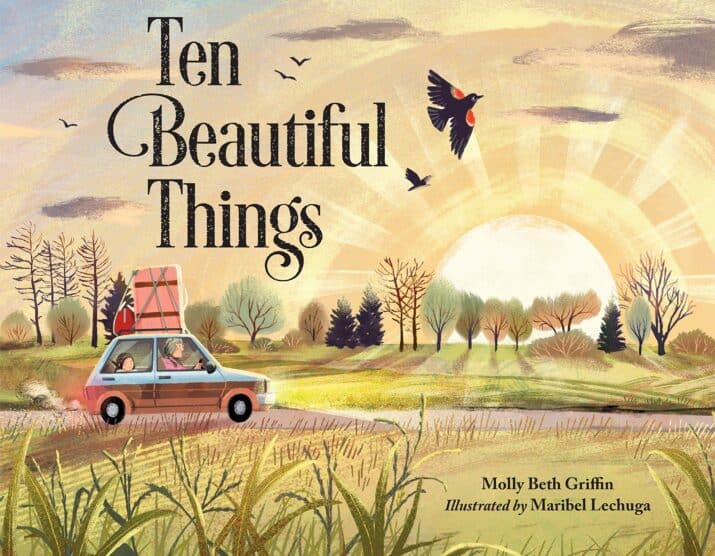
Ten Beautiful Things by Molly Beth Griffin, illustrated by Maribel Lechuga ![]()
This is a beautiful story where sorrow and beauty co-exist as a little girl sits in the back of her grandma’s car, traveling to her new home. As they drive, her grandma asks her to look for ten beautiful things along the way. Heartfelt and emotionally resonate.
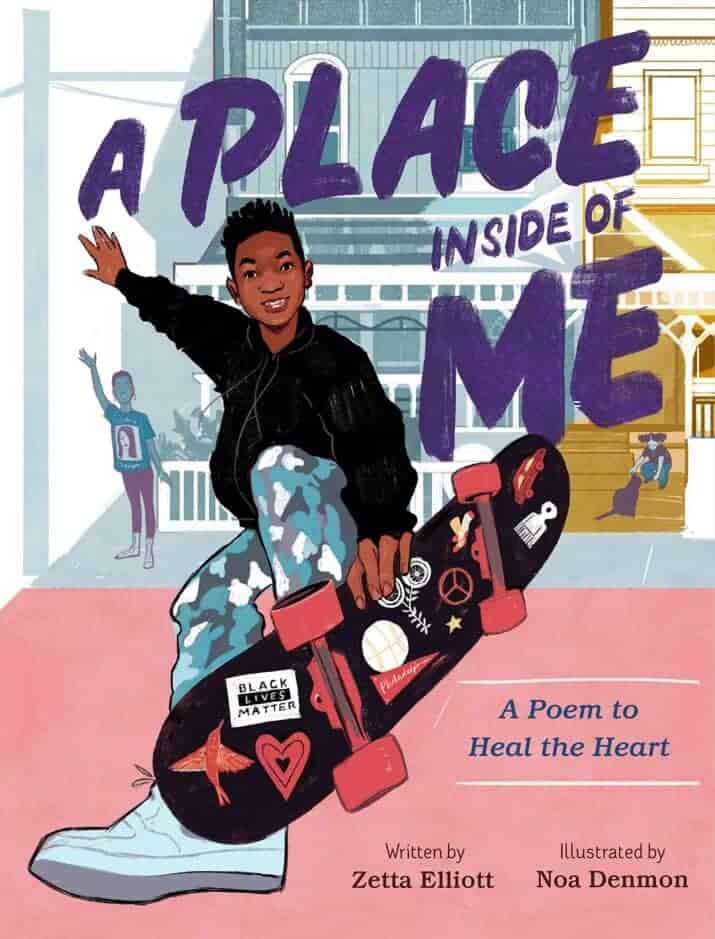
A Place Inside of Me by Zetta Elliott, illustrated by Noa Denmon ![]()
A black boy expresses a myriad of feelings that wait inside him for him to feel each one. Joy that glows bright and warm as the sun when he’s playing basketball, sorrow that is cold & dark when he sees the news about a police shooting, fear that stalks him and “seeps like a poison into my dreams”. He expresses his anger, hunger, pride, hope, love, and compassion in lyrical phrases and illuminating illustrations. This is an essential picture book for starting conversations about racial injustice, emotions, and what it’s like to be black in the U.S.
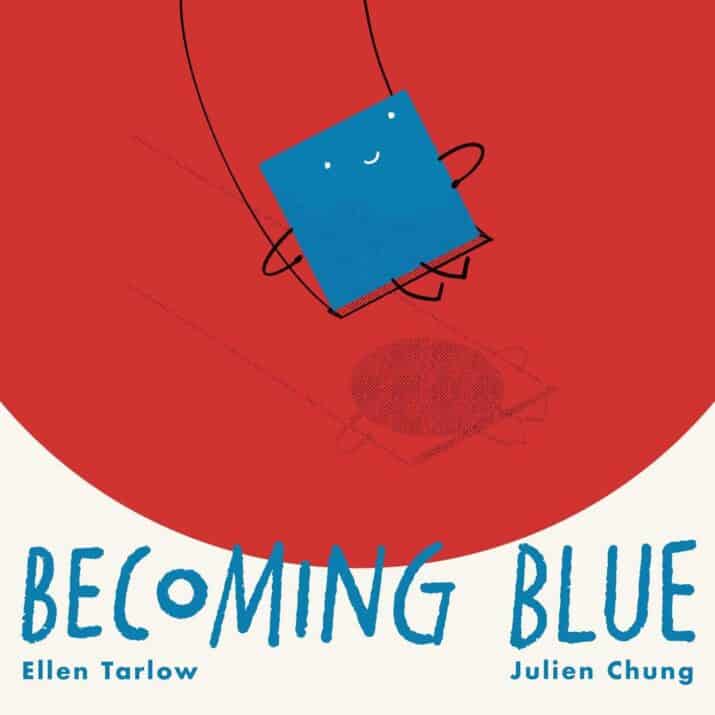
Becoming Blue by Ellen Tarlow, illustrated by Julien Chung
An excellent story about jealousy and learning to see your own value! Blue feels jealous of all the cool things Red can do! When Red tells Blue to STOP copying her, Blue ponders being Blue — and learns that he loves being Blue with his birds and lakes and sad songs. And they even pair up together at the end and make purple!
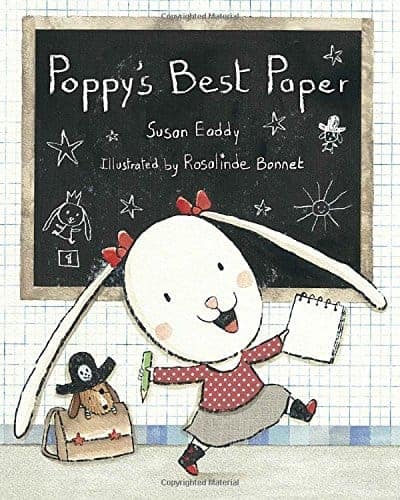
Poppy’s Best Paper by Susan Eaddy, illustrated by Rosalinde Bonnet
Kids will learn about jealousy and perseverance in this relatable picture book about Poppy. She wants her paper to be picked as the best in the class. When it’s not, she’s MAD. And jealous. In the end, Poppy keeps working hard and her paper is finally picked. I really love the artwork and the message in this story.

The Things I Love About Me by Trace Moroney
I want this for my kids, and yours, don’t you? Enjoy this self-love, confidence board book about a cute bunny who loves so many things about herself such as her fluffy ears, her big smile, and being a good friend. Warm and fuzzy!
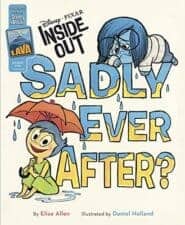
Inside Out Sadly Ever After? by Elise Allen, illustrated by Daniel Holland
Riley experiences many emotions throughout her life which is shown in two memories; one of a picnic and the other of going to school. (joy, anger, fear, disgust, and sadness.)
Updated: 8/2022
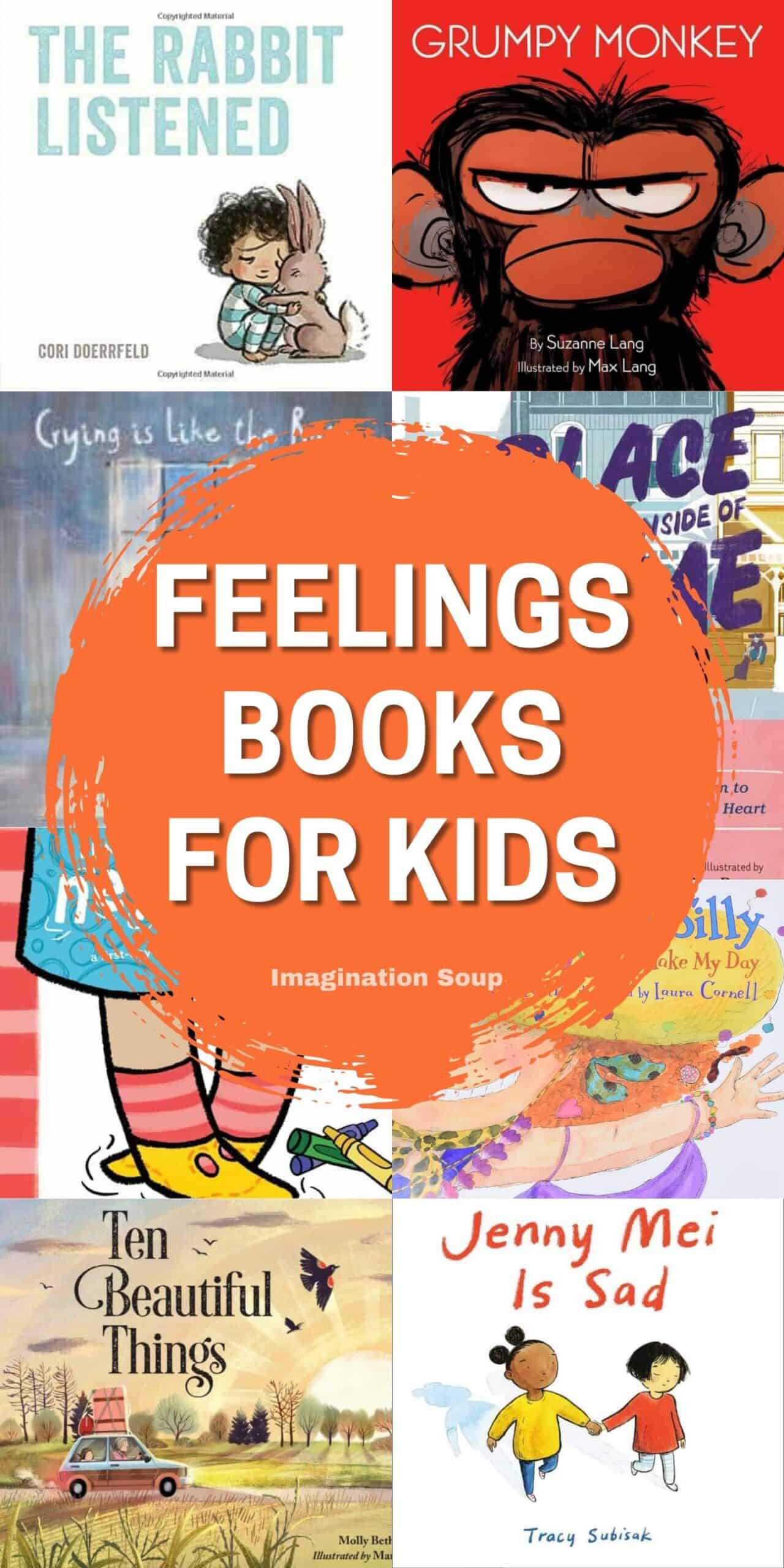
KEEP READING:
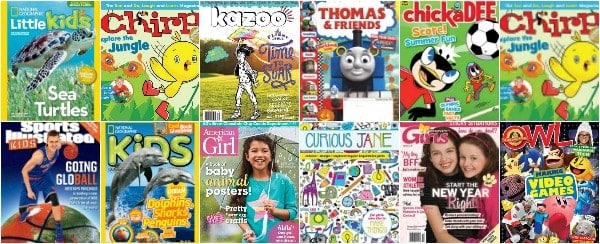
Good Magazines for Kids
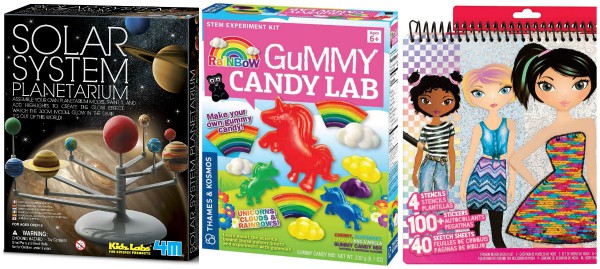
Art, Craft, and STEM Kits for Kids
Original Source Link

 PARENTING TIPS
PARENTING TIPS PREGNANCY
PREGNANCY BABY CARE
BABY CARE TODDLERS
TODDLERS TEENS
TEENS HEALTH CARE
HEALTH CARE ACTIVITIES & CRAFTS
ACTIVITIES & CRAFTS